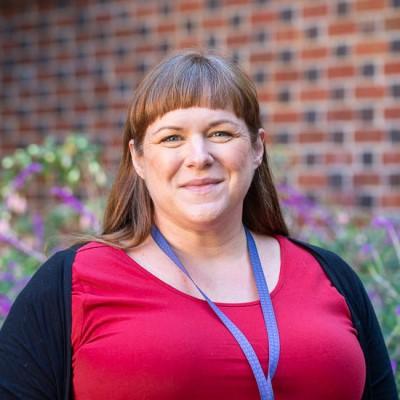The UCSF-Gladstone Center for AIDS Research (CFAR) announces the availability of supplemental funding to address the “Ending the HIV Epidemic: A Plan for America” (EtHE) initiative (Webcast here: http://www.croiwebcasts.org/console/player/41036?mediaType=slideVideo&). The UCSF Center for AIDS Prevention Studies (CAPS) is also eligible to submit supplements for this opportunity. Each center (both CFAR and CAPS) is eligible to submit three applications, for a total of 6 applications. NIH requires that CFAR and CAPS coordinate the selection of projects to prevent overlap. Therefore, we will be conducting a joint internal competition to determine which applications will go forward for submission to the NIH.
Proposed projects should be for the purpose of planning EtHE activities with your collaborating partners. It is anticipated CDC, HRSA and IHS programs/projects targeted toward the EtHE initiative will be funded in FY20. The CFAR/CAPS planning projects are for FY19 to begin discussions with local partners around potential FY20 projects. These planning projects may include feasibility studies, especially if collaborations have already been established and are ongoing, with the possibility that successful projects would lead into expanded implementation science studies next year.
The key aspects of this funding opportunity are:
- Applications may be submitted for up to one year with maximum funding per application of up to $100,000 Direct Costs (subcontract indirect costs are allowed and are not included in the Direct Costs limit)
- Applications must include collaborating partners as described in the announcement
- Projects must address one or more of the four key pillars: Diagnose, Treat, Protect, and Respond
- Projects that are a continuation of previously funded CFAR/CAPS supplements or funded NIH applications that do not address new specific aims are not eligible for funding under this announcement
- The earliest anticipated start date is July 08, 2019 but may be delayed due to administrative issues
- No NIH-defined clinical trials are allowed. If an intervention is planned, the study must evaluate feasibility only.
3 Awards
-
Optimizing novel strategies to increase virologic suppression rates among unstably housed patients living with HIV
Optimizing novel strategies to increase virologic suppression rates among unstably housed patients living with HIV

Abstract
Homelessness and unstable housing are major barriers to achieving the goals of the Ending the HIV Epidemic in the United States. In San Francisco, unstable housing is the strongest risk factor for poor HIV outcomes, including viremia. Single-component interventions (text messaging, patient navigation) have had limited efficacy in improving virologic suppression rates in this population, largely due to significant structural and individual-level barriers that are not addressed comprehensively by single interventions.
-
Optimizing novel strategies to increase virologic suppression rates among unstably housed patients living with HIV
Optimizing novel strategies to increase virologic suppression rates among unstably housed patients living with HIV

Abstract
Homelessness and unstable housing are major barriers to achieving the goals of the Ending the HIV Epidemic in the United States. In San Francisco, unstable housing is the strongest risk factor for poor HIV outcomes, including viremia. Single-component interventions (text messaging, patient navigation) have had limited efficacy in improving virologic suppression rates in this population, largely due to significant structural and individual-level barriers that are not addressed comprehensively by single interventions.
-
Enhancing case-based and behavioral surveillance for key populations in Alameda County
Enhancing case-based and behavioral surveillance for key populations in Alameda County
Abstract
Our supplement application addresses the “Respond” pillar of the plan to End the HIV Epidemic (EtHE) by strengthening inter-county epidemiological data to identify, characterize, and act upon the final cases of HIV transmission. San Francisco and Alameda counties (two of the 48 priority counties in the US) propose to conduct joint surveillance analyses, expand National HIV Behavioral Surveillance (NHBS), and field test an mHealth open cohort to track changes in risk and preventive behaviors among people who inject drugs (PWID).
-
Enhancing case-based and behavioral surveillance for key populations in Alameda County
Enhancing case-based and behavioral surveillance for key populations in Alameda County
Abstract
Our supplement application addresses the “Respond” pillar of the plan to End the HIV Epidemic (EtHE) by strengthening inter-county epidemiological data to identify, characterize, and act upon the final cases of HIV transmission. San Francisco and Alameda counties (two of the 48 priority counties in the US) propose to conduct joint surveillance analyses, expand National HIV Behavioral Surveillance (NHBS), and field test an mHealth open cohort to track changes in risk and preventive behaviors among people who inject drugs (PWID).
-
Evaluating gaps and improving immediate linkage and ART initiation in the Bay Area
Evaluating gaps and improving immediate linkage and ART initiation in the Bay Area

Abstract
San Francisco and Alameda counties carry the largest burden of HIV in the Bay Area and are 2 of the 48 counties with the highest number of new HIV diagnoses in the US. Rapid initiation of HIV treatment is a key pillar ("Treat") of the Ending the Epidemic initiative and one of the central strategies of Getting to Zero efforts in the Bay Area. While both San Francisco and Alameda counties have launched programs to support rapid linkage and treatment in some clinics, efforts to implement RAPID in the Bay Area have been siloed, with little collaboration between counties.
-
Evaluating gaps and improving immediate linkage and ART initiation in the Bay Area
Evaluating gaps and improving immediate linkage and ART initiation in the Bay Area

Abstract
San Francisco and Alameda counties carry the largest burden of HIV in the Bay Area and are 2 of the 48 counties with the highest number of new HIV diagnoses in the US. Rapid initiation of HIV treatment is a key pillar ("Treat") of the Ending the Epidemic initiative and one of the central strategies of Getting to Zero efforts in the Bay Area. While both San Francisco and Alameda counties have launched programs to support rapid linkage and treatment in some clinics, efforts to implement RAPID in the Bay Area have been siloed, with little collaboration between counties.
